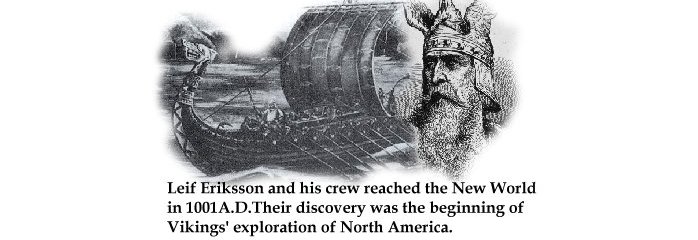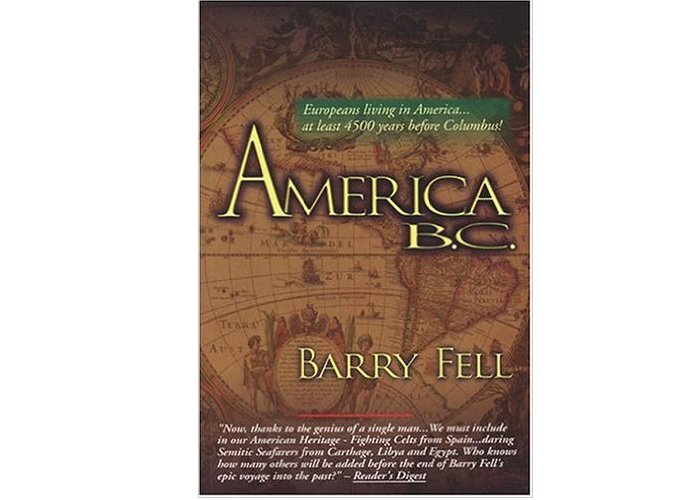Riddle Of Mystery Hill: Who Built America’s Stonehenge?
Ellen Lloyd - AncientPages.com - When 17th century Europeans reached what is now New Hampshire, they found that someone had been there before them.
Evidence suggests that North America was colonized long before the birth of Christ. The truth is there was an advanced civilization on the shores of America thousands of years ago.
Who were these people? Where did they come from? Discover the secrets behind one of the oldest American megaliths.
Mystery Hill is an ancient American site near Salem in New Hampshire. This fascinating place has puzzled scientists for centuries. The stones and inscriptions discovered at this location show that Columbus was anything but the first person to reach the New World.
New Hampshire Mystery Hill, also known as America's Stonehenge, is located about 40 miles north of the city of Boston and about 25 miles inland from the Atlantic Ocean. It is one of Northern America's largest and possibly oldest megalithic sites. Mystery Hill is a series of stone formations traversing over 30 acres.
Mystery Hill, New Hampshire - Image credit: Stan Shebs - CC BY-SA 3.0
When the Europeans colonized today's New Hampshire, they discovered traces of an unknown civilization. The Spaniards paid little attention to the purpose behind the stone circles and other curious megaliths they witnessed.
It took 300 years before the ancient stones of New Hampshire were noticed and examined by scientists.
There is a lot of controversy and several unanswered questions surrounding American Stonehenge.
Who constructed the stone circles near Salem? Is it possible that the mysterious architects were members of an ancient civilization from across the sea? Did the ancients know more about the world than modern man imagined?
Mystery Hill was built to last. The stones at Mystery Hill were not raised by the Pueblo Indians who built cliff houses and brick and masonry homes. The Pueblo Indians lacked proper tools to work with stones found at the American Stonehenge. To work with brick is more manageable than with stone.
Additionally, comparing the techniques used to build the pueblos and the ancient structures near Salem makes it clear that the architects were not the same.
Who Built Mystery Hill And Why?
The architects of Mystery Hill had an impressive knowledge of astronomy. Stone walls throughout the site provide over 200 astronomical alignments with the moon, 45 different stars, and critical geographic points.
 Huge monoliths are aligned to mark the summer and winter sunrise. One standing stone points to the star Thuban, the North Pole star in 2000 B.C. The stones may have helped those who lived here to plot the seasons.
Huge monoliths are aligned to mark the summer and winter sunrise. One standing stone points to the star Thuban, the North Pole star in 2000 B.C. The stones may have helped those who lived here to plot the seasons.
Although Mystery Hill is often referred to as America's Stonehenge, the arrangement of the stones and circles in New Hampshire differs from the original Stonehenge in the United Kingdom.
Stonehenge is located on a plain, not a hill, and is arranged specifically as a series of concentric circles, horseshoes, and squares. The stones involved in Stonehenge are larger, up to 45 tons. The rocks at Mystery Hill are smaller, and the largest is about 11 tons. The stones at Mystery Hill seem scattered around and disordered, yet the monoliths were raised for a specific reason.
The altar stone, known as the Sacrificial Stone, was most likely a place of sacrifice to appeal to the gods.
The altar is a 4.5-ton grooved slab, and it bears a striking resemblance to altar stones found at megalithic sites in Europe.
Beneath the sacrificial table is the Oracle Chamber. It is an elaborate web of hallways and carved-out spaces that are thought to have been used during rituals upon the altar. It contains a bed, bench, closet, and a tube that allows a person inside the lower chamber to speak to congregants above at the altar.
In addition to the Oracle Chamber and the Sacrificial Stone, the site has many other artificial caves and passages. At least one was constructed with a drain to keep them from being flooded. The purpose of the rest of these structures, except one which appears to be a water well, is unknown.
Where Can We Find Clues And Discover The Truth About The Architects Of Mystery Hill?
Some say Mystery Hill was built by the ancient Celts and served as an astronomical calendar.
Others suggest giants raised the ancient stones. According to another theory, the rocks are remains of an ancient Bronze Age civilization from the Mediterranean that reached New Hampshire in the distant past.
Approximately 500 years before the Spaniards and Portuguese reached the shores of America, the Viking Leif Eriksson set foot in the New World in 1001 A.D. Ericson and his crew made it to Vinland, now identified by archaeologists as Anse aux Meadows, Newfoundland.
Although the Vikings made only a few voyages to the New World, Leif Erikson's discovery began the Vikings' exploration of North America.
But the Vikings did not build Mystery Hill. "Someone" was already there even before the time of the Vikings…
Some years ago, samples were taken from Mystery Hill. They were sent to a laboratory in Cambridge, Massachusetts, for examination. The results were astonishing. In this case, carbon dating showed that the samples from Mystery Hill were at least 3,000 years old! As many already know, Carbon-14 dating determines the age of certain archaeological artifacts of a biological origin up to about 50,000 years old.
It means that approximately 1,000 before the birth of Christ, an ancient civilization visited New Hampshire and raised the mysterious stones, which we can admire until today.
The origin of the Mystery Hill ancient architects is a fascinating story.
We can conclude that the 17th Europeans, the Pueblo Indians, and the Vikings were not ancient builders who raised the rocks. There must be another ancient civilization responsible for the megaliths near Salem.
Our journey and search for the forgotten builders of the past take us across the sea.
Might the unknown visitors to Mystery Hill have crossed the ocean? Did the ancient builders arrive by ship from the East? These are intriguing and highly controversial questions always avoided by traditional archaeologists.
Barry Fell, an archaeologist from Harvard, put forward a controversial theory.
It has long been taken for granted that the first European visitors to American shores either sailed with Columbus, or Norsemen like Leif Erikson. Berry Fell has uncovered evidence to replace those legends with myth-shattering fact. Illuminating, authoritative and enhanced with over 100 pictures, that describes ancient European temple inscriptions that date as far back as 800 B.C.. Read more
In 1976, Barry Fell wrote America B.C., a book that pointed out parallels between American and European archaeological sites.
Mr. Fell studied inscriptions, drawings, and engravings from Mystery Hill.
The result of his research clearly showed that America in ancient times was populated by various European races and people from North Africa. Fell could identify traces of Basks, Celts, Phoenicians, and ancient Egyptians across the country.
In Barry Fell's opinion, the ancient visitors came in large ships. The first voyage was accidental. The explorers "stumbled upon" new land and their unexpected discovery led later to more trips to this region of the world.
Another controversial theory promoted by Professor Hanz Holzer suggests that Mystery Hill was built by the ancient Minoan civilization.
According to Professor Holzer, one particular stone, known as the G-Stone provides evidence that the Phoenicians constructed Mystery Hill.
"To me it is not question that this was written by people who spoke the ancient Phoenician language and used the Phoenician alphabet. The origin of this inscription is in the area of Phoenicia, and the island of Crete. The Minoan culture where Phoenician people settled and then became the Minoan people," said Professor Holzer.
The wall lane is typical of Knossos, a city in ancient Crete, the capital of the legendary king Minos and the principal center of the Minoan, the earliest of the Aegean civilizations. In addition, the long central lane at Mystery Hill is reminiscent of some walls in ancient Europe. Professor Holzer thinks that the style of masonry is the same.
We may never know who built Mystery Hill. We know that the ancient builders who possessed astronomical knowledge came from another place. The ancient stones are most likely the remains of ancient culture from across the sea.
Mystery Hill's origins have puzzled men for centuries, and it still does. America's Stonehenge remains as mysterious as ever.
Written by Ellen Lloyd – AncientPages.com
Updated on September 18, 2022
Copyright © AncientPages.com All rights reserved. This material may not be published, broadcast, rewritten or redistributed in whole or part without the express written permission of AncientPages.com
More From Ancient Pages
-
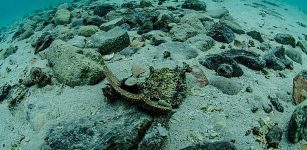 800-Year-Old Shipwreck Discovered Off Salento Coast, Italy
Archaeology | Dec 30, 2015
800-Year-Old Shipwreck Discovered Off Salento Coast, Italy
Archaeology | Dec 30, 2015 -
 Human DNA Shaped By Past Events Caused Sharp Dips In The Population
News | Jun 27, 2022
Human DNA Shaped By Past Events Caused Sharp Dips In The Population
News | Jun 27, 2022 -
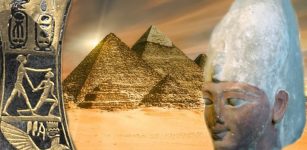 Pharaoh Ahmose I Expelled The Hyksos Invaders And Changed History Of Ancient Egypt
Featured Stories | Mar 16, 2021
Pharaoh Ahmose I Expelled The Hyksos Invaders And Changed History Of Ancient Egypt
Featured Stories | Mar 16, 2021 -
 Long History Records Of Medicine In Mesopotamia And Sumer
Civilizations | Nov 20, 2017
Long History Records Of Medicine In Mesopotamia And Sumer
Civilizations | Nov 20, 2017 -
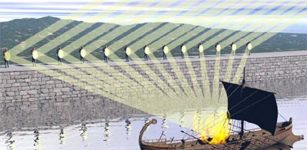 Giant Solar Mirrors And Sophisticated Lenses – Advanced Ancient Technology Used By Our Ancestors
Ancient Technology | Jun 15, 2020
Giant Solar Mirrors And Sophisticated Lenses – Advanced Ancient Technology Used By Our Ancestors
Ancient Technology | Jun 15, 2020 -
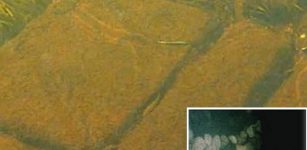 Remarkable Man-Made Underwater Structures Could Rewrite History Of Wisconsin
Featured Stories | Aug 22, 2018
Remarkable Man-Made Underwater Structures Could Rewrite History Of Wisconsin
Featured Stories | Aug 22, 2018 -
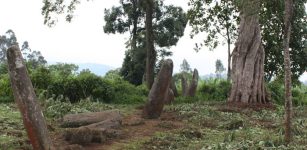 Ancient Stone Monoliths In Ethiopia Are 1,000 Years Older Than Previously Thought
Archaeology | Dec 11, 2021
Ancient Stone Monoliths In Ethiopia Are 1,000 Years Older Than Previously Thought
Archaeology | Dec 11, 2021 -
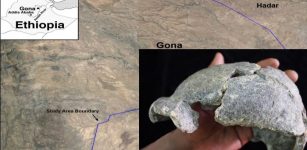 Gona, Ethiopia Discovery: Smallest ‘Homo Erectus’ Cranium In Africa And Stone Tools – Unearthed
Archaeology | Mar 5, 2020
Gona, Ethiopia Discovery: Smallest ‘Homo Erectus’ Cranium In Africa And Stone Tools – Unearthed
Archaeology | Mar 5, 2020 -
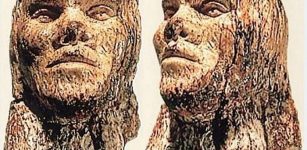 Incredible Mammoth Ivory Male Head From Dolni Vestonice, Czech Dated To 26,000 BC
Artifacts | Jun 23, 2015
Incredible Mammoth Ivory Male Head From Dolni Vestonice, Czech Dated To 26,000 BC
Artifacts | Jun 23, 2015 -
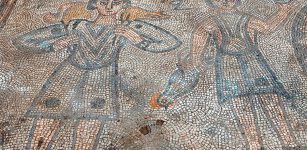 Mosaics Discovered In 1,600-Year-Old Church In Mardin Province,Turkey
Archaeology | Sep 22, 2020
Mosaics Discovered In 1,600-Year-Old Church In Mardin Province,Turkey
Archaeology | Sep 22, 2020 -
 Discovered – Large Mysterious Structure Hidden Under The Sand In The Sahara Desert – A New Pyramid Or Something Else?
Archaeology | Nov 13, 2019
Discovered – Large Mysterious Structure Hidden Under The Sand In The Sahara Desert – A New Pyramid Or Something Else?
Archaeology | Nov 13, 2019 -
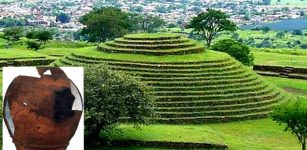 Giant Pre-Hispanic Jar Used To Make Mexican Traditional Corn Beer
Archaeology | May 6, 2020
Giant Pre-Hispanic Jar Used To Make Mexican Traditional Corn Beer
Archaeology | May 6, 2020 -
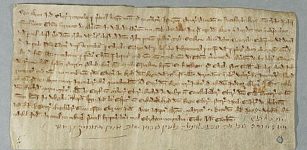 York’s Thriving Medieval Jewish Community – New Study
Archaeology | Aug 22, 2023
York’s Thriving Medieval Jewish Community – New Study
Archaeology | Aug 22, 2023 -
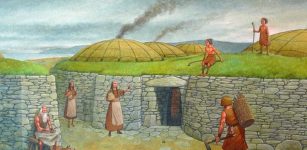 Obscure History Of Skara Brae – Home To Dwarfs
Civilizations | Apr 12, 2017
Obscure History Of Skara Brae – Home To Dwarfs
Civilizations | Apr 12, 2017 -
 What Was The True Meaning Of Pankration And Other Ancient Games
Archaeology | Sep 11, 2021
What Was The True Meaning Of Pankration And Other Ancient Games
Archaeology | Sep 11, 2021 -
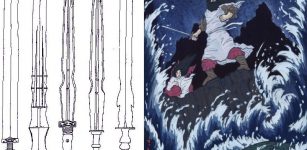 Sacred Regalia Of Japanese Emperor: Sword, Mirror And Jewel In Ancient Japanese Tradition
Artifacts | Sep 2, 2017
Sacred Regalia Of Japanese Emperor: Sword, Mirror And Jewel In Ancient Japanese Tradition
Artifacts | Sep 2, 2017 -
 Huangluo: Long-Hair Village Where Women Don’t Cut Their Hair – A 2,000-Year-Old Tradition Of The Yao People
Ancient Traditions And Customs | Jun 18, 2017
Huangluo: Long-Hair Village Where Women Don’t Cut Their Hair – A 2,000-Year-Old Tradition Of The Yao People
Ancient Traditions And Customs | Jun 18, 2017 -
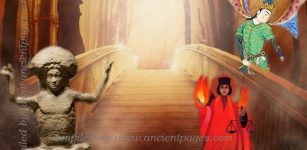 Three Judges Of Souls Await You On Chinvat Bridge – Gateway To Unknown Realms In Zoroastrian Beliefs
Featured Stories | Aug 11, 2021
Three Judges Of Souls Await You On Chinvat Bridge – Gateway To Unknown Realms In Zoroastrian Beliefs
Featured Stories | Aug 11, 2021 -
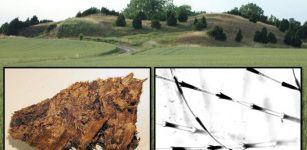 Surprising Discovery In Valsgärde Viking Boat Graves – Scandinavian’s Oldest Down Bedding Found
Archaeology | Mar 27, 2021
Surprising Discovery In Valsgärde Viking Boat Graves – Scandinavian’s Oldest Down Bedding Found
Archaeology | Mar 27, 2021 -
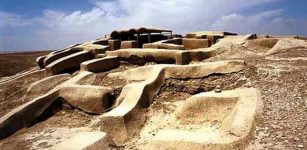 The Burnt City And Its Mysterious Prehistoric Inhabitants
Civilizations | Nov 17, 2014
The Burnt City And Its Mysterious Prehistoric Inhabitants
Civilizations | Nov 17, 2014



